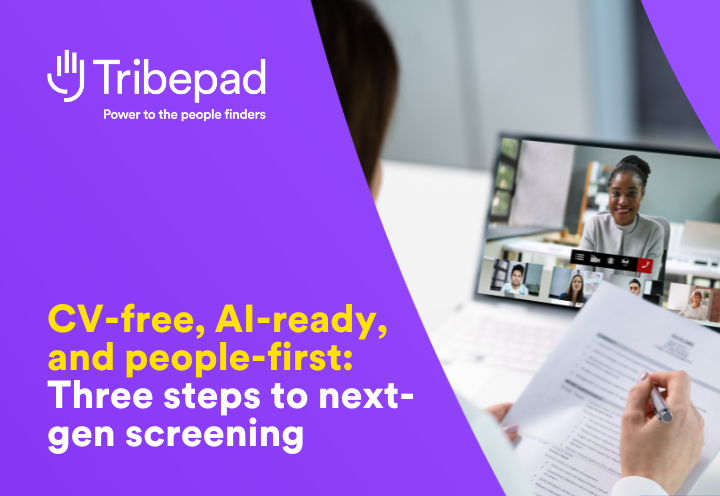Great recruitment reporting is a top priority for public-sector recruitment software. But how do you know which reporting capabilities to look for? We work with heaps of public sector organisations (like the NHS, and many local authorities) so we see day-in, day-out which reporting requirements matter most.
The public sector relies heavily on good recruitment reporting. Complex chains of command can make reporting complicated, but more importantly, reporting is crucial to prove the organisation is delivering on its commitments to the community. When you’re using public funds, it’s vital to prove you’re using those funds well to deliver quality public services. How effectively and efficiently an organisation recruits is a crucial part of the story that employees, senior leaders, and the public should understand.
Public sector organisations have robust chains of accountability internally, to the government, and to the public.
Public sector recruiters are under constant pressure to prove (and improve) progress. Recruitment reporting is critical to justify resources and show how the recruitment function drives value for the organisation and wider community.
Good recruitment reporting empowers public sector teams to do two things:
- Spot and solve challenges, to continually improve recruitment
- Share recruitment’s success stories, internally and externally
Together, those things are instrumental to growing the value and perception of recruitment. And ultimately, to building a great workforce that helps the organisation realise its goals and deliver fantastic results for its communities.
Let’s talk about what public sector bodies should be looking for from a recruitment analytics perspective.
Tribepad is more advanced from a data perspective than the recruitment tech I’ve used previously, even in the data-hungry private sector.
Six priorities for public sector recruitment reporting
If you’re evaluating your current recruitment reporting set-up, here are six factors we reckon public sector organisations should prioritise.
1 – ED&I reporting
Representation and inclusion are major priorities for every public sector organisation we know.
To offer everyone in our communities fair, equal access to quality public services, public sector workforces must be representative of those communities. Those diverse perspectives and backgrounds are integral to ensure everyone has a voice.
Robust diversity reporting should empower public sector recruiters to attract, interview, hire, and retain more diverse people, at every level and across every department or service.
It should be easy to:
- Compliantly collect, process, store, use and delete information about protected characteristics
- Understand how applicants move into and through your organisation at granular level, so you can identify and clear bottlenecks
- View real-time up-to-date diversity data, analyse trends and refine your priorities for ED&I
- Issue diversity questionnaires in as much detail as you want, to understand applicants’, candidates’ and new hires’ diverse experiences
- Reach into, build, and report on talent pools around under-represented communities
- Generate simple, intuitive, flexible reports with the right ED&I info for the right people
2 – Time-to-offer reporting
Sometimes the public sector gets a bad reputation for slow, dinosaur-like processes that wear candidates’ patience thin. And sometimes that reputation is deserved.
For many roles in the public sector, speed makes an enormous difference to hiring success.
As Jason Gracey, Strategic Resourcing Manager with Staffordshire County Council puts it:
“Is your process slick? Is it speedy? Is the communication good? Those are the fine lines today that make the difference between a candidate choosing us and not.”
Of course, there are elements you can’t change (much). The right recruitment software can help minimise the complex checks and balances burden but you’ll always have lengthy post-offer processes to handle.
But accelerating the process from role to offer should be a major priority – and is much easier to get a handle on. To that end, public sector recruitment reporting should have great time-to-offer reporting that shows you time within each stage, at recruiter, team, and department level.
(That’s less common than you’d think. Because the private sector most often reports on time-to-hire not time-to-offer, recruitment software providers without specialist public sector expertise often lack flexibility to change these parameters.)
Here’s a step-by-step blueprint for using recruitment reporting to accelerate time-to-offer.
3 – Candidate source reporting
Money’s not an issue… said nobody in the public sector. Recruitment resource is, as ever, tight. Budgets are, as ever, being squeezed.
Big private sector organisations can often afford to splurge money across channels just to have coverage, but the public sector has to make sure every penny is working hard.
That puts a premium on accurate candidate source reporting. Public sector recruiters need to know where candidates come from, and what journey they’ve taken to reach you. So you can channel funds into the tactics that work and optimise recruitment spend.
For example:
- Maybe you’re over-spending with a board that delivers lots of poor quality applications
- Or under-spending on your employee referral programme, which is consistently delivering excellent hires.
- Perhaps you should divert funds from underperforming social sit into a recruitment marketing campaign that’s working better than you thought
Public sector recruitment reporting should give you a clear understanding of your best recruitment channels.
4 – Compliance reporting
Public sector organisations have to stand up to a huge amount of scrutiny, to protect people in the community. Especially where you’re working with vulnerable service users withing Safer Recruitment guidelines.
That translates into comprehensive checking processes, often using a whole stack of specialist best-in-class integrations.
Good recruitment software for the public sector should be able to easily pull data from across these systems, to create a central system of record and compliant audit trail.
It’s also helpful if your software tracks stuff like license or certification renewal dates automatically, so any recurring checks are handled fast and easily (and reducing the scope for missing important dates and getting into legal hot water).
Cast-iron compliance reporting is critical to keeping your team, organisation, and community safe.
5 – Granular efficiency reporting
Public sector organisations are typically complex, multi-layered, and with various chains of command. It’s super important to invest into recruitment reporting that can reflect this nuance, to build a true picture of your recruitment across the organisation.
For example:
- How does time-to-offer differ from service to service?
- How has representation improved by seniority?
- How does accepted offer rate vary by manager or team?
Knowing the answers to questions like these helps you make smarter decisions to drive improvements.
And getting this granular means you can be focussed about where and how you solve problems, which is much more cost-effective. Why invest into educating and upskilling all managers about, say, unconscious bias, when only one department really needs it?
6 – Easy, fast, and intuitive reports
Public sector recruitment teams – and service heads, executives, cabinet leaders, department heads, and so on – are always flat-out. There’s neither time nor appetite to spend hours working out how to run reports. Or scroll through endless pages of meaningless numbers.
Public sector teams need recruitment software that not only has the right reporting coverage, but makes it super simple to collate, condense, and send tailored reports to the right people. Often to many people, across multiple chains of command.
The best recruitment reporting in the world is useless is nobody reads or engages with it.
Tribepad Insights is a massive win for local government. It’s phenomenal to have a system that can give business insights at this level; it’s given us visibility and accountability. There’s nothing it can’t tell you; it’s such a powerful tool.
Tribepad is the trusted tech ally to smart(er) recruiters everywhere. Our talent acquisition software is a springboard for faster, fairer, better recruitment for everyone.
Trusted by public sector organisations like the NHS, and numerous local authorities including Staffordshire County Council, Milton Keynes City Council, Coventry City Council, Surrey County Council, and Kent County Council, 25 million people in 16 languages use Tribepad.




